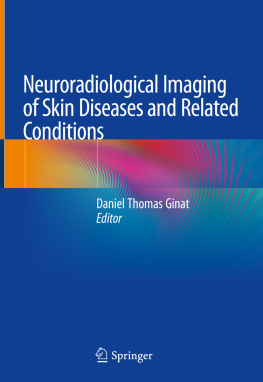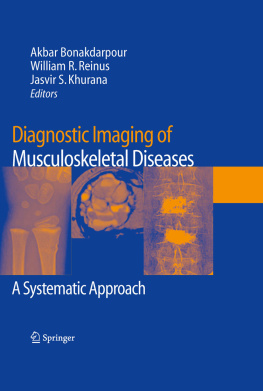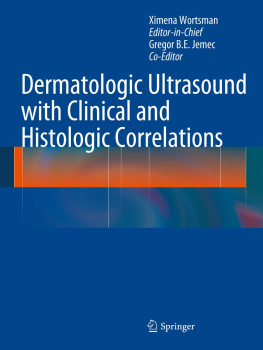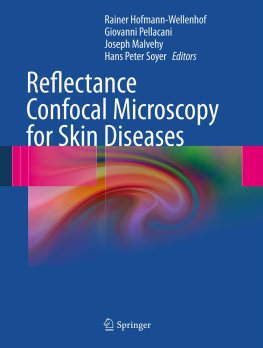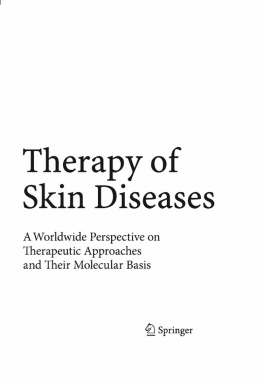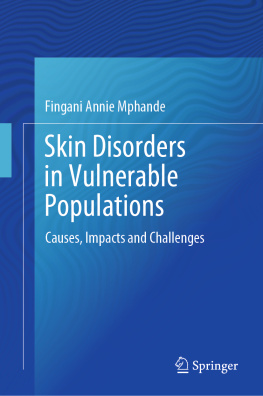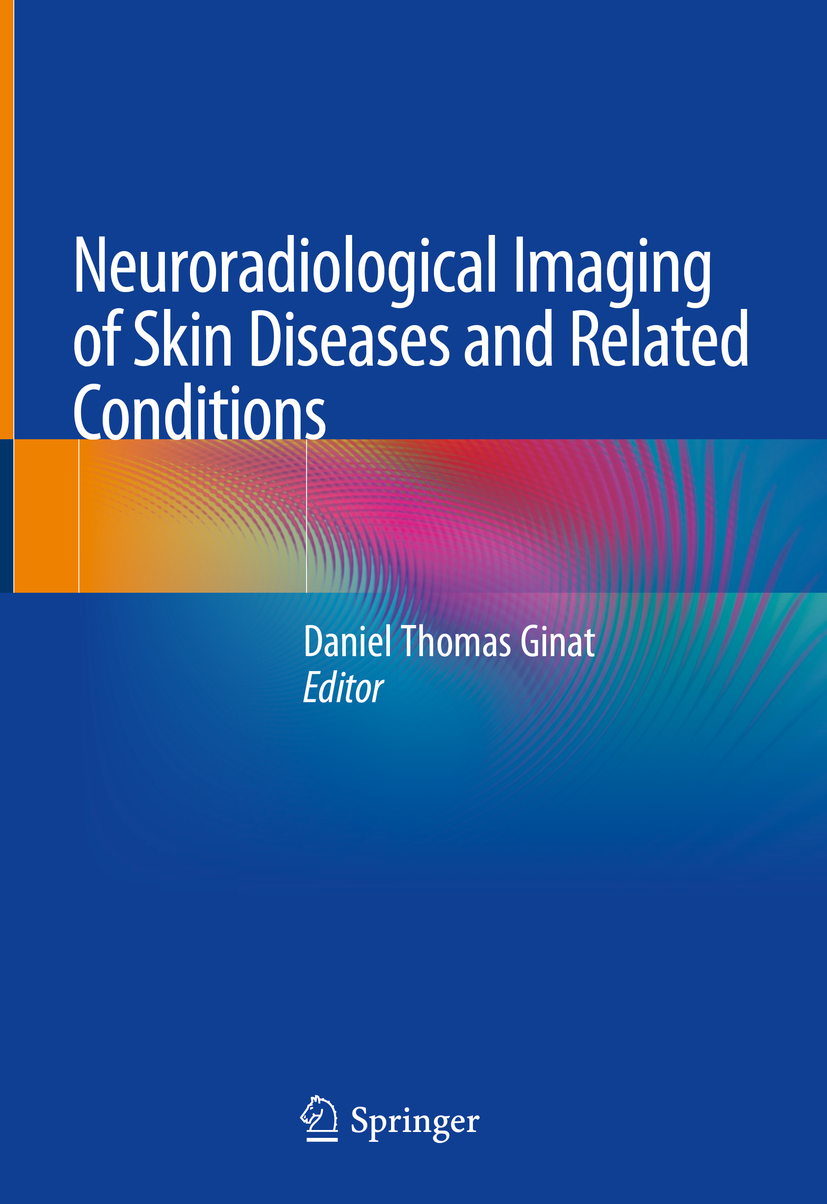Editor
Daniel Thomas Ginat
Neuroradiological Imaging of Skin Diseases and Related Conditions
Editor
Daniel Thomas Ginat
Radiology, University of Chicago, Chicago, IL, USA
ISBN 978-3-319-90929-5 e-ISBN 978-3-319-90931-8
https://doi.org/10.1007/978-3-319-90931-8
Library of Congress Control Number: 2018959113
Springer International Publishing AG, part of Springer Nature 2019
This work is subject to copyright. All rights are reserved by the Publisher, whether the whole or part of the material is concerned, specifically the rights of translation, reprinting, reuse of illustrations, recitation, broadcasting, reproduction on microfilms or in any other physical way, and transmission or information storage and retrieval, electronic adaptation, computer software, or by similar or dissimilar methodology now known or hereafter developed.
The use of general descriptive names, registered names, trademarks, service marks, etc. in this publication does not imply, even in the absence of a specific statement, that such names are exempt from the relevant protective laws and regulations and therefore free for general use.
The publisher, the authors and the editors are safe to assume that the advice and information in this book are believed to be true and accurate at the date of publication. Neither the publisher nor the authors or the editors give a warranty, express or implied, with respect to the material contained herein or for any errors or omissions that may have been made. The publisher remains neutral with regard to jurisdictional claims in published maps and institutional affiliations.
This Springer imprint is published by the registered company Springer Nature Switzerland AG
The registered company address is: Gewerbestrasse 11, 6330 Cham, Switzerland
Foreword
One could consider the skin as the last great unexplored frontier in neuroimaging. Up until now, most MRI of the skin and its disorders has been confined to the neurocutaneous syndromes. When one looks carefully at the literature on this topic, it is easy to realize that although the lesions in the central nervous system have received considerable attention those in the skin have not. My first reaction (and I am sure that many radiologists have the same one) is, why look at the skin lesions when they are obvious to physical examination? Well, dermatology is similar to radiology in that personal experience plays a huge role in reaching a correct diagnosis and in that many lesions look similar.
In this beautifully illustrated and highly original book, Ginat and his coauthors provide radiologists with a concise but complete overview of skin lesions, many unknown to imagers. Because skin lesions occur throughout the body, this book should be helpful to all subspecialties of radiology not only neuroradiology. Appropriately, this book covers all of the traditional phakomatoses but also includes imaging of benign and malignant tumors. All entries contain clinical photographs, histology, and imaging using different modalities. Postoperative procedures including those performed for cosmetic reasons are addressed in the last chapter.
Although books such as this one are generally used as consultation sources and not completely read, this one deserves more attention than just casual perusing. Reading it cover to cover will expand the horizons of radiologists and will make us look at skin lesions differently. Instead of stating that another nonspecific skin lesion is present, after reading this book we should be able to offer a diagnosis or an intelligent differential diagnosis.
The future always lies in the previously unexplored or the insufficiently explored. Although not covered in this book, I can see a future when imaging may play an important role in the assessment of skin grafts, genetic modifications of skin lesions, and other types of therapies. But for the time being, this superb book fulfills an empty niche. I congratulate the authors for their careful work, superb illustrations, concise and informative text, and courage to venture into a new territory.
Mauricio Castillo
Chapel Hill, NC, USA
Preface
When I visited my aunts house as a child, one of my favorite activities there was perusing the vivid and dramatic photos in a skin disease atlas. Although I did not become a dermatologist, that experience has to some degree inspired me to prepare this book. The subject matter still appeals to my inner childhood imagination and is also relevant to my clinical work as a neuroradiologist.
One might wonder what skin diseases have to do with radiology. While skin lesions are readily visible on clinical exam, diagnostic imaging is useful for evaluating the depth and extent of the lesions and assessing many associated conditions that are beyond skin deep, such as neurocutaneous syndromes. Therefore, it is important to be aware of the various skin diseases and their associated systemic and neuroimaging findings. Besides the radiology findings, this book includes clinical and pathology images and descriptions, when appropriate and possible.
I hope you enjoy this first edition of Neuroradiological Imaging of Skin Diseases and Related Conditions .
Daniel Thomas Ginat
Chicago, IL, USA
January 2018
Acknowledgements
Companies :
Triangle Exim
Longport Inc.
Contents
Daniel Thomas Ginat and Nicole A. Cipriani
Edwina Chang , David Frim , Nicole A. Cipriani and Daniel Thomas Ginat
James Tonsgard , Annie Xiao and Daniel Thomas Ginat
Daniel Thomas Ginat , Nicole Cipriani and Jason Michael Johnson
Daniel Thomas Ginat , Nicole A. Cipriani , Joshua Eassa and Vesna Petronic-Rosic
Daniel Thomas Ginat , Nicole A. Cipriani , Carson Barnes , Judy Wu and Elizabeth Blair
Daniel Thomas Ginat , Sarah L. Stein , Stephanie McCann and Gregory Christoforidis
Tamari Miller , Marc Moisi and Daniel Thomas Ginat
Andrew Kuhn , Charles J. Schatz , Daniel Haraf and Daniel Thomas Ginat
1. Introduction: Skin Anatomy, Imaging Approaches, and Dermatology Terminology

